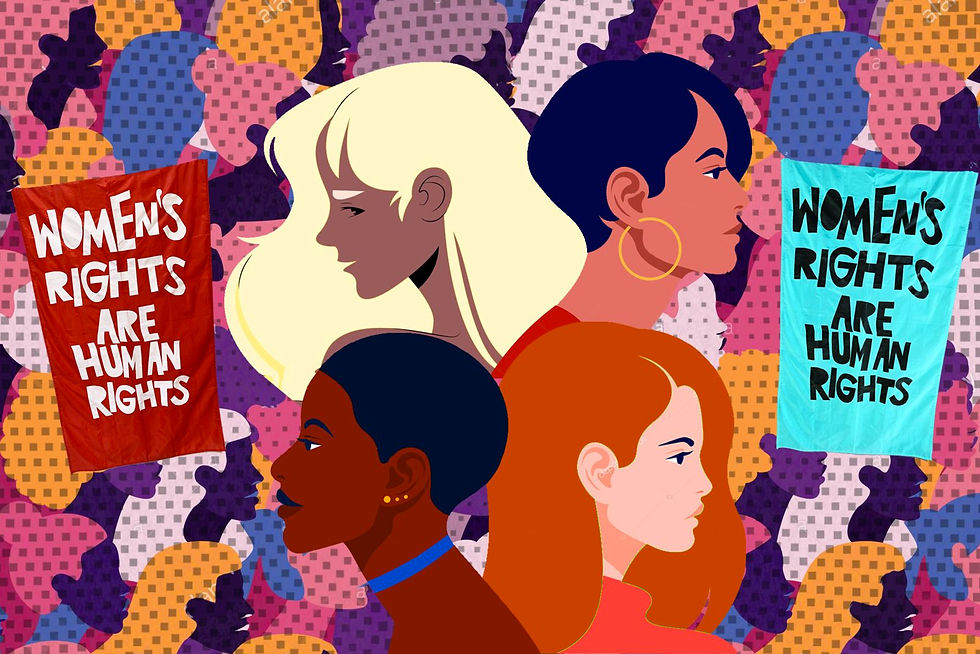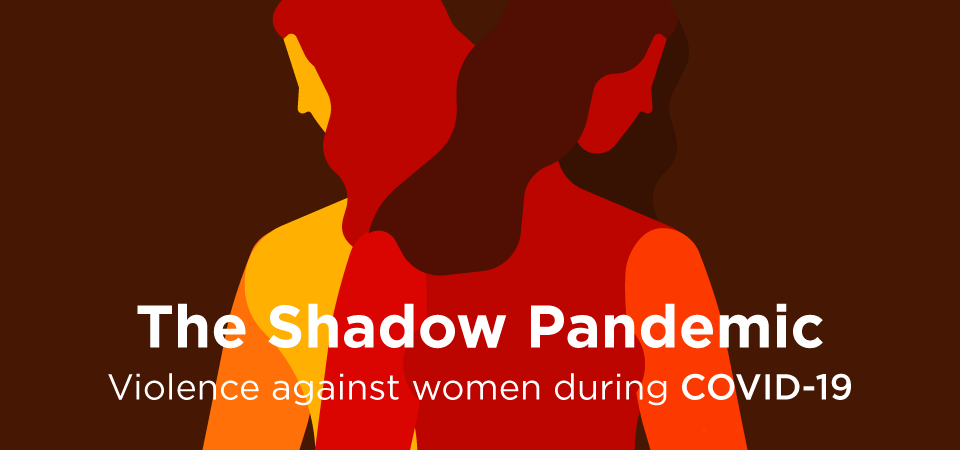Gender Equal Resilience and Recovery
- Keisha N. Blades

- Mar 5, 2022
- 7 min read
Updated: Mar 6, 2022
International Women's Day

March 8, 2022
By: Keisha N. Blades
As we enter the third year of the pandemic, we have all witnessed the widening gaps in pre-existing inequalities, social protection and poverty. The fragility of our economies have been exposed and as a result, women have been disproportionately impacted compared to their male counterparts. From health to economic, security to protection, these impacts were amplified simply because of their gender. According to the United Nations Statistics Division (2020), worldwide women employment loss was 5.0 percent compared with 3.7 percent for men. In light of these facts, recovery plans must consider the gendered impacts of the pandemic in the interest of breaking the bias in policy planning and decision making.

Informal Employment
Research shows that Informal employment is a greater source of income for women than for men at the world level (92 vs 87 percent) in developed countries (ILO 2019). Furthermore, the hardest hit sectors are those with jobs predominantly held by women, including the restaurant and hospitality business as well as the travel sector. Informal jobs lack the protection of labour laws, social benefits such as health insurance and pension, pay low wages and are the first to disappear in times of looming economic uncertainty. Women’s exposure to low-quality informal jobs makes them more vulnerable, so in the face of this situation, employers need to ensure women’s fundamental rights and protections are upheld, irrespective of their employment arrangements.

Unpaid Care and Domestic Work
According to the University of California Data Operations Hub, women are responsible for 75 percent of all unpaid care and domestic work (globally), including childcare, elder care, and household duties. COVID restrictions such as School closures, cause women to shoulder an even heavier burden by forcing them to leave the labour market to care for their children and other family members. While unpaid labour is essential for households and economies to function, women are left in a position where they have less time for paid work, personal development, self-care, and leisure. The discrimination of this crisis has reversed decades of progress, widening the gender gap further. A gap that can be closed through recognizing unpaid work at the national policy level, by creating policies that enforce changes to promote equality. Also, by providing access to affordable childcare and creating family-friendly working conditions and flexible work schedules. Raising visibility on this issue and incorporating it into COVID-19 response and recovery efforts, will allow women to participate in the workforce, creating opportunities to reach their full potential.

Reskilling and Upskilling
Women are an untapped resource and increasing their participation in the labour market can ensure building back better beyond the pandemic. However, women face an uncertain future thanks to the 53.4 percent of job losses experienced by women in the leisure and hospitality industry (BLS 2022). This has led to a mismatch in the labour market where there is a misallocation between job seekers and labour demand and employees from shrinking sectors are not returning. This mismatch will require an upgrade in reskilling and upskilling workers, which could potentially move women into better jobs, keep them in the workforce and bring back those who left. In this context, recovery plans must reinforce the economic and social resilience of women, with measures which foster effective and inclusive education systems that seek to encourage skills acquisition in line with current and future labour market needs.

Women Entrepreneurs
Women entrepreneurs, particularly in low- and middle -income countries, face several challenges in setting up, growing, and sustaining their businesses. Challenges such as lack of access to finance, discrimination, poverty, and political instability. At this time of enormous economic loss and uncertainty, new and existing women entrepreneurs are in sectors most severely impacted by restrictions introduced to combat the spread of COVID. These sectors include education, health and accommodation and food services sectors, and the “other services” sector which includes businesses such as sports facilities, funeral homes, hairdressers, and businesses offering beauty treatments. The United Kingdom (UK) estimates women-led SMEs to be education (32 percent), health (29 percent), other services (24 percent), accommodation and food service (21 percent), and administration and support (20 percent) (Devine, Foley and Ward 2021). Women entrepreneurs are bearing the brunt of disruption and additional childcare, homeschooling, and household responsibilities, have led to lower levels of productivity, worsening stress levels and health. The untapped potential of women could be the key to reviving the global economy. It is therefore crucial that women owned businesses not only survive, but also thrive through the pandemic. This will require fiscal support packages for women owned MSMEs, removing discrimination from the process of applying for financing and ensuring that policies, legislation and financial products and services consider the needs of women entrepreneurs.

The Shadow Pandemic
Globally, pre-pandemic, 1 in 3 women experienced physical and or sexual violence mostly by an intimate partner. Emerging data shows that sexual harassment and all other forms of violence against women and girls, has since intensified and is now being referred to as the Shadow Pandemic. Lockdowns and stay at home orders, forced women to stay at home with violent partners, isolating them from the people and resources that can provide help. Violence against women and girls (VAWG) is a human rights violation and though the number of instances has spiked, it is still widely under reported. Less than 40 percent of women who experience violence, report these crimes, or seek help of any kind (United Nations 2020). Under these circumstances, the needs of women and girls who face multiple forms of violence must be prioritized by allocating additional resources to strengthen services for women who experience violence, designating safe spaces for women, moving services online, improving quality of response, stepping up advocacy and awareness campaigns and by placing women at the centre of policy change, solutions, and recovery.

Women’s Mental Health
Along with the rapidly increasing cases in the pandemic, came surging concerns about mental health and “though the fatality rate for men has been twice as high than that for women, the pandemic has impacted more women’s health than men” (Van Ness 2021). Mainly because globally, women make up 70 percent of the health workforce and are more likely to be front-line health workers, especially nurses, midwives, and community health workers (United Nations 2020). They have been highly susceptible to contracting COVID-19 and the emotional toll associated with it. The escalation in mental health issues due to the pandemic was also felt by women with pre-existing mental health conditions, pregnant women and new mothers, international students and migrant and refugee women, mental health carers, older women, women with disabilities and women facing other social and economic challenges. More than a quarter of women reported increased stress, depression, anxiety and other mental health struggles (CARE 2022). Unfortunately, policy decisions and initiatives surrounding women’s health, particularly mental health, are often overlooked. According to the Pan American Health Organization, mental health accounts for an average of just 2 percent of country’s health budgets (PAHO 2018). However, addressing the gaps and improving the mental health system will require comprehensive reform. Governments will need to collect gender-disaggregated data that considers the specific social support and mental health needs of women and girls, address the gendered causes of mental health issues, including social and economic inequalities and ensure the universal public health approach is gender-responsive, enabling women to access mental health information, online resources, helplines, and support that best meet their needs.

Women’s Access to Health Care
In many regions, women and girls find it difficult to receive treatment and health services due to inequalities such as ethnicity, socioeconomic status, disability, age, race, geographic location, and sexual orientation, among others (United Nations 2020). This challenge has been further compounded by COVID-19 and women and girls with unique health needs have not been able to access quality health services, essential medicines and vaccines, maternal and reproductive health care, or insurance coverage for routine and catastrophic health costs. On the flip side, a high share of women with access to health care, have been opting to forgo recommended preventative services in response to the pandemic. Nearly half of women who report being in fair or poor health, report skipping preventive care (46 percent), with many reporting worsening health conditions as a result. Possibly because they may view themselves as more at risk for COVID exposure and opt to skip routine preventive care (KFF 2021). More women than men have also reported not being able to get an appointment because of the pandemic (30 vs. 20 percent), which could be a result of women being more likely to seek care, limited services deemed non-essential or elective and reduced clinic hours and closures (KFF 2021). Furthermore, on average, women earn lower incomes than that of men - in part due to wage gaps - and will be more vulnerable to high healthcare costs. According to 2020 data from the Bureau of Labor Statistics, women earn 82 cents for every dollar a man earns (BLS 2020). Low-income women remain at a greater risk of being uninsured and will routinely forgo needed care to remain financially secure. In addition to cost barriers, women will skip preventative health services due to lack of paid sick leave or to avoid losing their jobs. While great strides have been made in improving women’s health and expanding access to quality healthcare, there are still far too many who face ongoing barriers and are left without the care they need. As policymakers consider health policies in their plans, they may want to explore opportunities to address the disparities in insurance coverage for women, promote preventative and wellness initiatives, increase access to telemedicine and virtual reproductive health care platforms and and the availability of safe in-person care.

Resilience
Women’s economic advancement will improve the economy as a whole. This ongoing crisis has shown us the importance of not only building resilient economies but also building resilient women. Eliminating the vulnerabilities that undermine their resilience will require looking at the pandemic through a gender lens and placing women’s lives at the heart of the pandemic response and recovery efforts.
References
BLS. 2020. "United States Department of Labor." Bureau of Labor Statistics. https://www.bls.gov.
BLS. 2022. "United States Department of Labour." Bureau of Labour Statistics. January. https://www.bls.gov/news.release/pdf/empsit.pdf.
CARE. 2022. "In Practice: Rapid Gender Analysis." Care Insights. https://insights.careinternational.org.uk/in-practice/rapid-gender-analysis.
Devine, Brigid Francis, Niamh Foley, and Matthew Ward. 2021. "Women and the Economy." House of Commons Library. March. https://researchbriefings.files.parliament.uk/documents/SN06838/SN06838.pdf.
ILO. 2019. "Women and Men in the Informal Economy: A Statistical Brief." International Labour Office. January. https://www.ilo.org/wcmsp5/groups/public/---ed_protect/---protrav/---travail/documents/publication/wcms_711798.pdf.
PAHO. 2018. "The Burden of Mental Health Disorders in the Region of the Americas, 2018." Pan American Health Organisation .https://www3.paho.org/hq/index.php?option=com_content&view=article&id=14999:mental-health-spending-must-increase-in-order-to-meet-current-needs-in-the-americas&Itemid=1926&lang=en.
KFF. 2021. "Women's Health Policy. Women's Experiences with Health Care During the COVID-19 Pandemic: Findings from the KFF Women's Health Survey." Kaiser Family Foundation. March 22. https://www.kff.org/womens-health-policy/issue-brief/womens-experiences-with-health-care-during-the-covid-19-pandemic-findings-from-the-kff-womens-health-survey/.
PAHO. 2018. "The Burden of Mental Health Disorders in the Region of the Americas, 2018." Pan American Health Organisation .https://www3.paho.org/hq/index.php?option=com_content&view=article&id=14999:mental-health-spending-must-increase-in-order-to-meet-current-needs-in-the-americas&Itemid=1926&lang=en.
United Nations. 2020. "Policy Brief: The Impact of Covid-19 on Women." UN Women. April 9. https://www.unwomen.org/sites/default/files/Headquarters/Attachments/Sections/Library/Publications/2020/Policy-brief-The-impact-of-COVID-19-on-women-en.pdf.
Van Ness, Maddie. 2021. "COVID-19 and Women’s Mental Health: The Impact on Wellbeing, Disparities, and Future Implications." Baylor University. April 01. https://www.baylor.edu/communityconnection/news.php?action=story&story=222809.







Comments